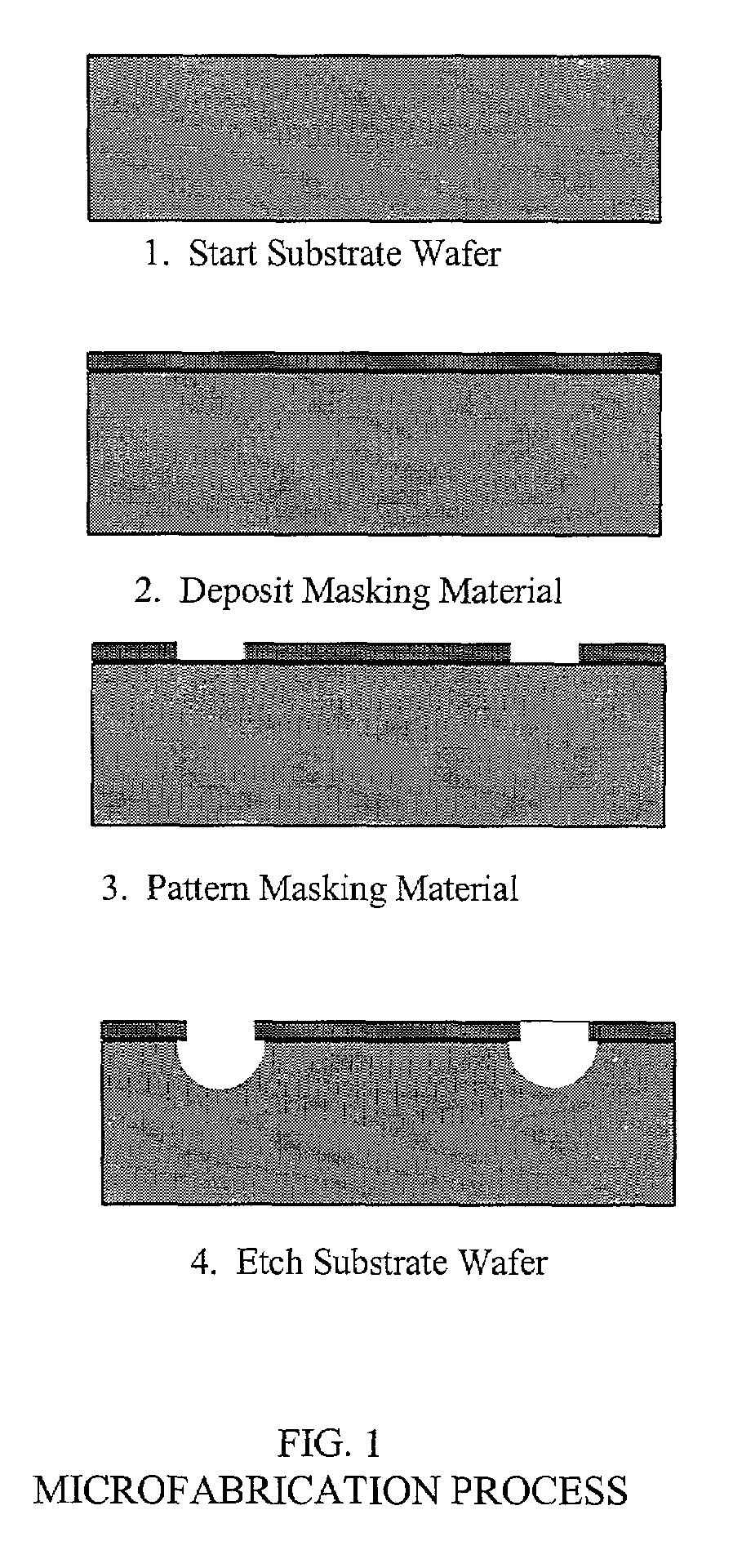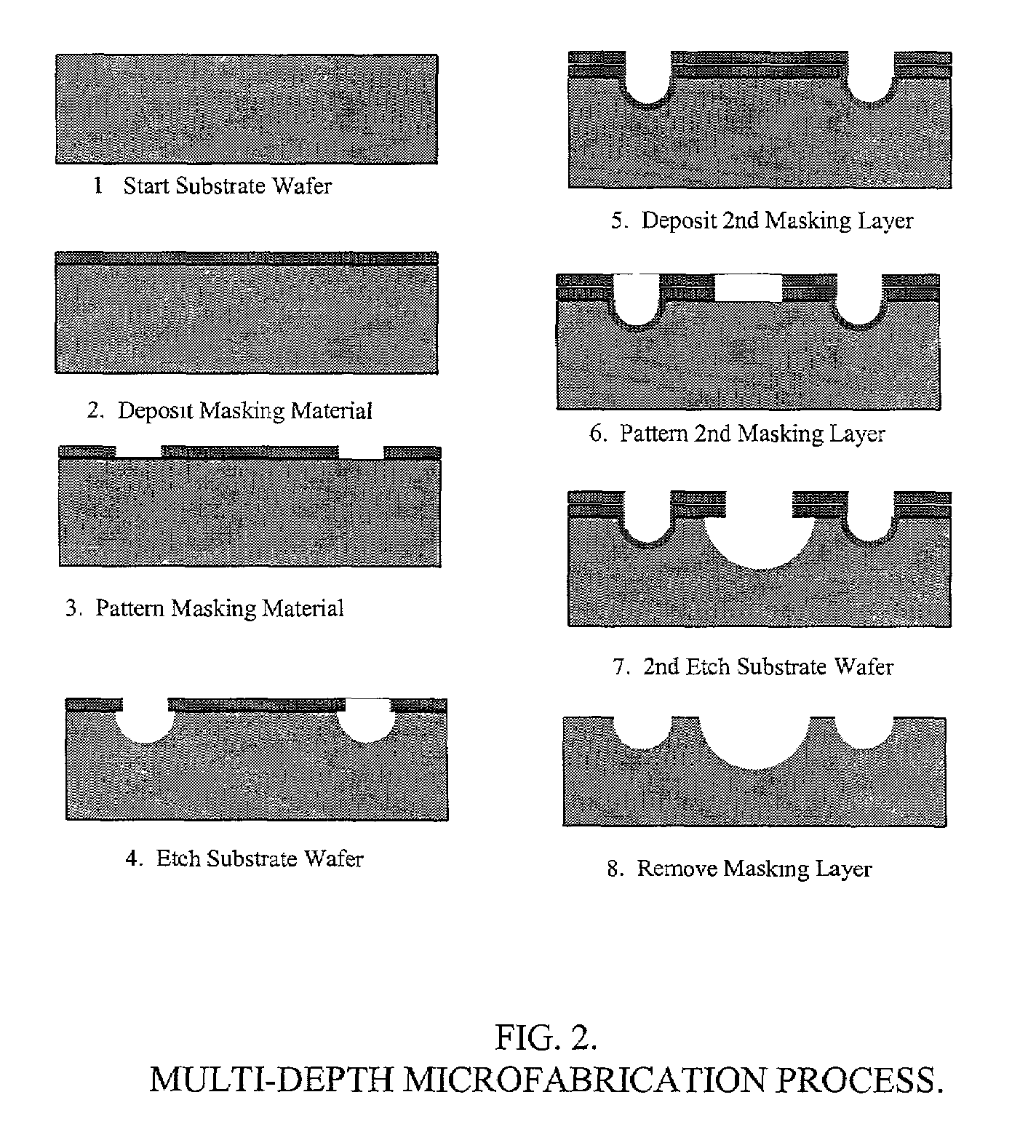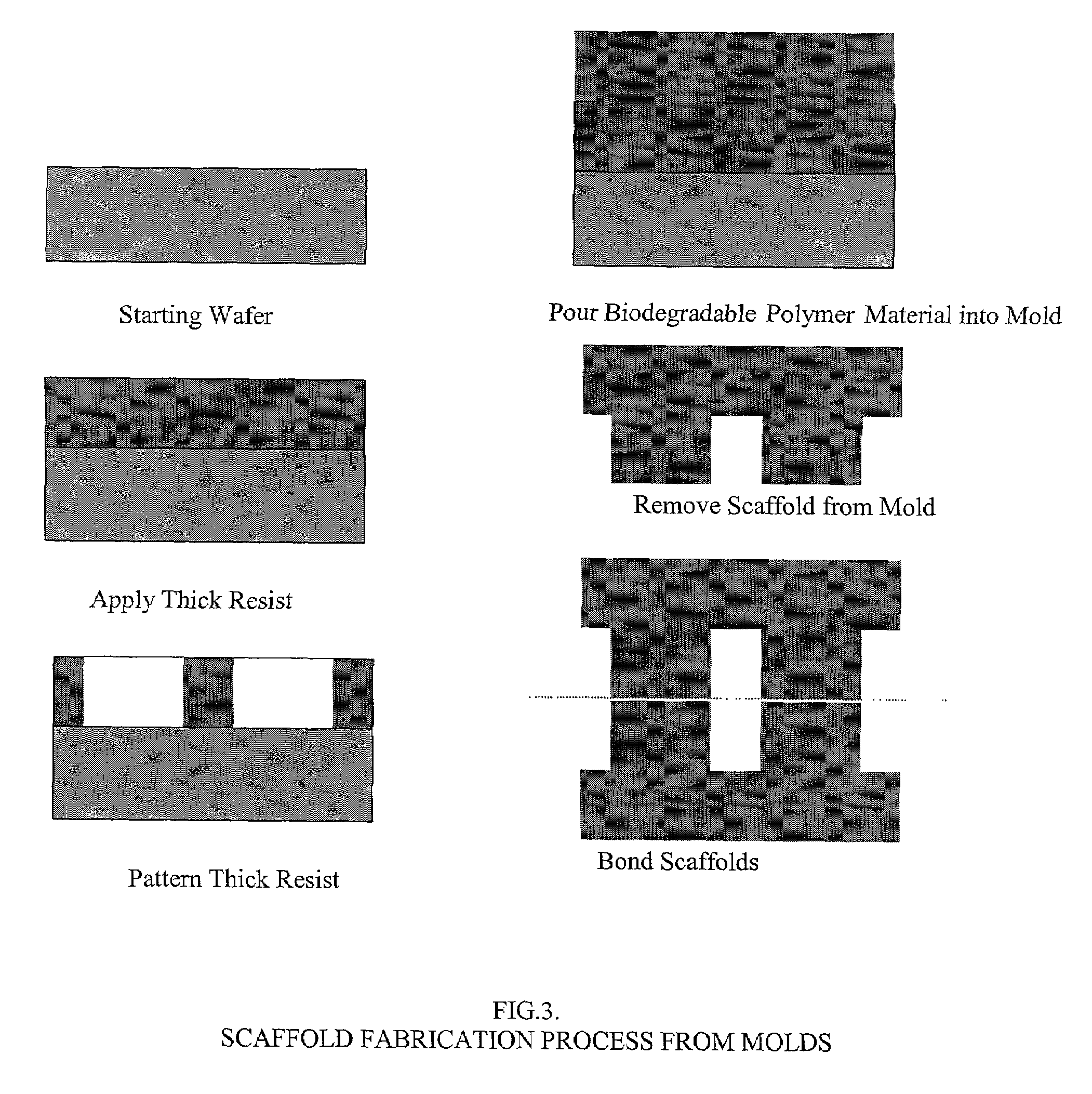Multilayer device for tissue engineering
a tissue engineering and multi-layer technology, applied in the field of tissue engineering, can solve the problems of mass transport, hypoxia and nutrient deprivation, and the limitation of the prior art methods of tissue engineering, and achieve the effects of significant cell death of cells in constructs larger than 1-2 mm
- Summary
- Abstract
- Description
- Claims
- Application Information
AI Technical Summary
Benefits of technology
Problems solved by technology
Method used
Image
Examples
example 1
Silicon Micromachining to Tissue Engineer Branched Vascular Channels for Liver Fabrication
[0154]Templates for the formation of sheets of living vascularized tissue were fabricated using micromachining technology. For this EXAMPLE, a single level etch was used to transfer a vascular network pattern into an array of connected trenches in the surface of either or silicon and glass wafers.
[0155]Micromachining Techniques. A simple geometry was selected for patterning the vascular network. Near the edge of each wafer, a single inlet or outlet was positioned, with a width of 500 μm. After a short length, the inlet and outlet branched into three smaller channels of width 250 μm; each of these branched again into three 125 μm channels, and finally down to three 50 μm channels. From the 50 μm channels extends the capillary network, which comprises the bulk of the layout. Between these inlet and outlet networks lies a tiled pattern of diamonds and hexagons forming a capillary bed and filling t...
example 2
Endothelialized Microvascular Networks Grown on Micromachined PYREX® Templates for Tissue Engineering of Vital Organs
[0184]This EXAMPLE shows the design, modeling, and experimental / computational testing of the endothelialized microvascular matrices grown on micromachined Pyrex® templates.
[0185]Patterns of microvascular networks were etched using microfabrication technologies on Pyrex® wafers. The pattern consisted of 10 generations of bifurcations from a single inflow channel of width 3 mm down to channels of width of 30 microns.
[0186]The channels were then collected to a single outflow. All channels were etched to the same depth of 30 microns. The Pyrex® wafer was sealed to a flat silicone rubber sheet of the same size. Endothelial cells harvested from rat lung were successfully seeded and expanded under continuous flow conditions in this microvascular network. Red blood cells harvested from rat were heparinized and perfused into the endothelialized channels, and successfully colle...
example 3
Microfluidics Device for Tissue Engineering Microvasculature: Endothelial Cell Culture
[0190]In this EXAMPLE, we have focused on fabrication of the microfluidic scaffold, in vitro seeding, and extended cell culture in the device. Capillary networks were fabricated in biocompatible PDMS, sterilized, coated with cell adhesion molecules, and seeded with cells. Cell-containing devices were then connected to a closed-loop bioreactor for long-term culture. We have used the device to demonstrate continuous-flow culture of endothelial cells for up to 4 weeks without occlusion or contamination.
[0191]In this EXAMPLE using confined geometries, we used traditional soft lithography microfluidics as a prototype matrix. These cell-containing microfluidics is capable of supporting long-term culture in vitro, because in vitro expansion of cells prior to implantation can take weeks. The prototype matrix is designed to supply sufficient oxygen and nutrients while avoiding large shear stresses. The matr...
PUM
| Property | Measurement | Unit |
|---|---|---|
| Thickness | aaaaa | aaaaa |
| Length | aaaaa | aaaaa |
| Width | aaaaa | aaaaa |
Abstract
Description
Claims
Application Information
 Login to View More
Login to View More - R&D
- Intellectual Property
- Life Sciences
- Materials
- Tech Scout
- Unparalleled Data Quality
- Higher Quality Content
- 60% Fewer Hallucinations
Browse by: Latest US Patents, China's latest patents, Technical Efficacy Thesaurus, Application Domain, Technology Topic, Popular Technical Reports.
© 2025 PatSnap. All rights reserved.Legal|Privacy policy|Modern Slavery Act Transparency Statement|Sitemap|About US| Contact US: help@patsnap.com



